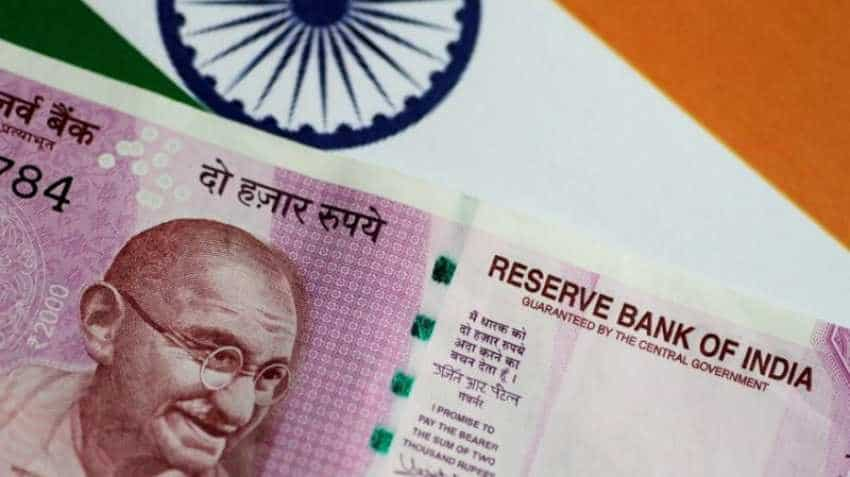Centre set to meet fiscal deficit target, but this spend faces axe
Finance minister Arun Jaitley may be confident of meeting the fiscal deficit target of 3.3% of GDP this fiscal to please global credit rating agencies, but it may lead to contraction of public capital expenditure, which is already low in GDP terms when compared to the previous year, fear experts.

Finance minister Arun Jaitley may be confident of meeting the fiscal deficit target of 3.3% of GDP this fiscal to please global credit rating agencies, but it may lead to contraction of public capital expenditure, which is already low in GDP terms when compared to the previous year, fear experts. Analysts said the trend in recent years to lower public capital expenditure does not augur well for the economy. In 2017-18, the Union Budget provided for public capital expenditure of 1.2% of GDP, which has come down to 0.9% of GDP in this year’s Budget.
The government made a major amendment in this year’s finance Bill, which went largely unnoticed. It has inserted provisions in the Fiscal Responsibility and Budget Management (FRBM) Act to allow higher than mandated borrowing and possibly spending, till the 2024 Lok Sabha election cycle. In an ideal fiscal situation, tax and non-tax revenue are used for administrative expenses and capital receipts, including market borrowings, are used for infrastructure expenditure.
The amendment ensured that the government will no longer have to report revenue deficit numbers and debt limit will run parallel to fiscal deficit target. Revenue expenditure usually reflects the consumption expenditure of the government. “No one is questioning the government’s ability to achieve 3.3% of GDP fiscal deficit target this year. My question is about the composition of fiscal deficit rather than the headline fiscal deficit,” N R Bhanumurthy, economist with National Institute of Public Finance and Policy, said.
As per the original FRBM Act, over a period of time government borrowing is to be utilised for capital expenditure only and the consumption expenditure is to be fully met by revenue mop-up. That’s why FRBM proposed that revenue deficit be brought to zero and fiscal deficit to 3% of GDP. The deficits are met by borrowing.
“The finance Bill passed this year clearly states there will be only fiscal deficit and public debt targets in FRBM. This means the government has indirectly stated there will be no concept of revenue deficit hereafter,’ Bhanumurthy told DNA Money. “This in my view is not expansionary. This meant shifting of expenditure from capital to consumption. Whenever there is fiscal stress, the first victim will be capital expenditure, which is not good for the economy,” he said.
Though there is some stability in expenditure this fiscal, there is a lot of uncertainty over revenue. As it is target of Rs one lakh revenue collection from GST every month has not happened so far. With the downward revision of GST rates periodically, Rs one lakh target will only be elusive for some more time. “At the moment there are pressures. We need to see what kind of election pressures are there. Ultimately the public expenditure will become the fall guy, Bhanumurthy said.
“Fiscal consolidation is not fiscal compression. Fiscal consolidation should always lead to higher growth provided the expenditure switching mechanism does not lead to expenditure compression mechanism, which will lead to contraction rather than expansion of the economy,’ he said. CARE chief economist Madan Sabnavis told DNA Money that fiscal deficit target can be met this year only through public expenditure compression with revenue targets slippages on GST and disinvestment fronts.
Crisil chief economist D K Joshi said the twin deficits ' fiscal and current account—which had improved under the current government, have started reversing from last fiscal. The runaway rise in oil prices could stir inflation scourge back to life and impact other macro indicators too.
A Crisil report estimates every $10 per barrel increase in crude oil price can raise India’s fiscal deficit by 8 basis points as a percentage of GDP and similarly current account deficit by 40 basis points.
The free fall of the rupee could only worsen the situation, with the country importing 80% of its crude oil requirement, analysts said.
Source: DNA
Get Latest Business News, Stock Market Updates and Videos; Check your tax outgo through Income Tax Calculator and save money through our Personal Finance coverage. Check Business Breaking News Live on Zee Business Twitter and Facebook. Subscribe on YouTube.
11:51 AM IST












 Centre, ADB sign $350 million loan to boost India's supply chains
Centre, ADB sign $350 million loan to boost India's supply chains Rupee rebounds from all-time low, gains 10 paise to close at 85.03 against US dollar
Rupee rebounds from all-time low, gains 10 paise to close at 85.03 against US dollar India's import of Russian oil drops in November on shrinking discounts
India's import of Russian oil drops in November on shrinking discounts India, Kuwait sign MoU to establish Joint Commission for Cooperation
India, Kuwait sign MoU to establish Joint Commission for Cooperation Swiggy Q2 results: Loss narrows to Rs 625 crore, revenue surges 30% YoY
Swiggy Q2 results: Loss narrows to Rs 625 crore, revenue surges 30% YoY